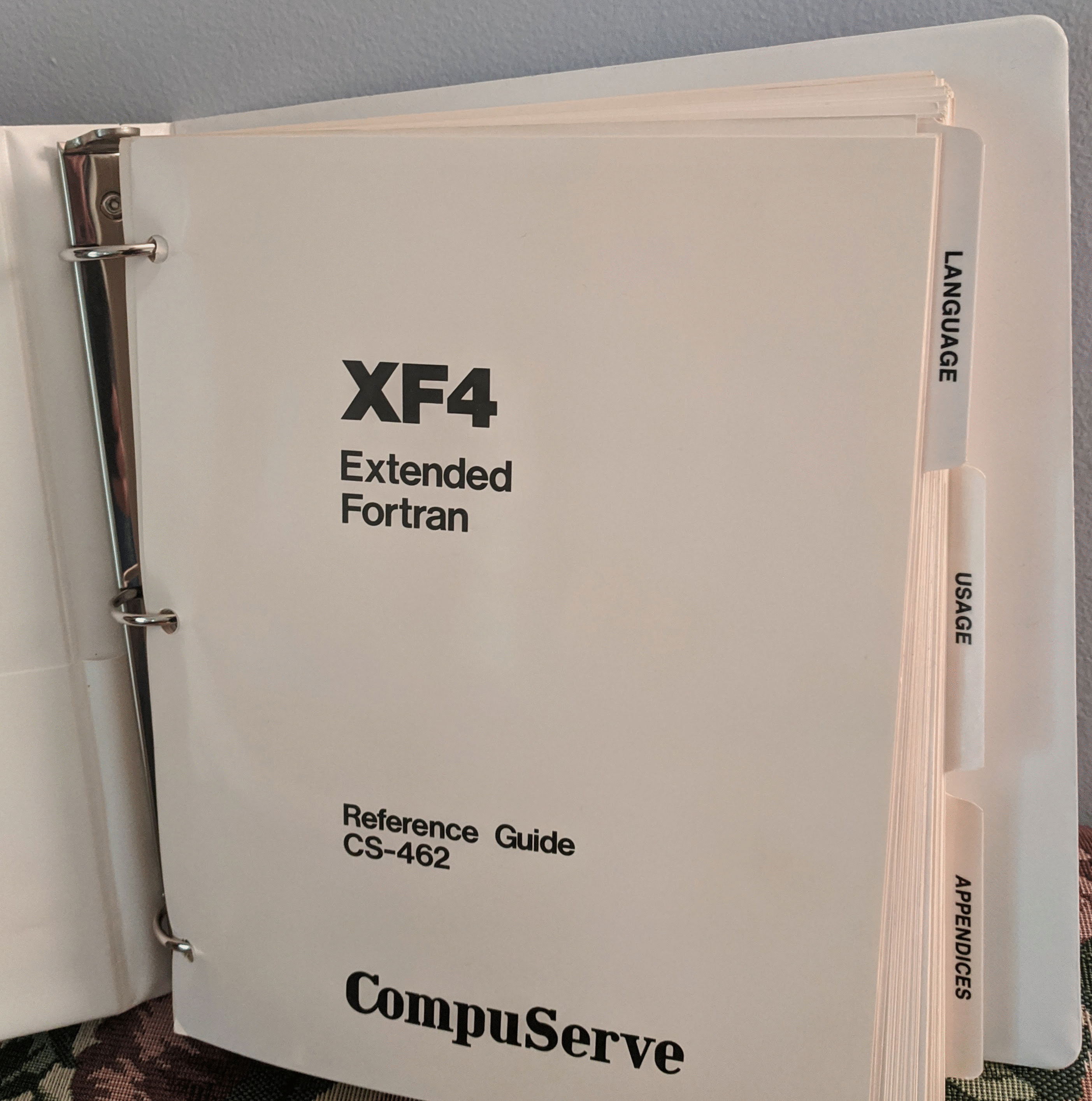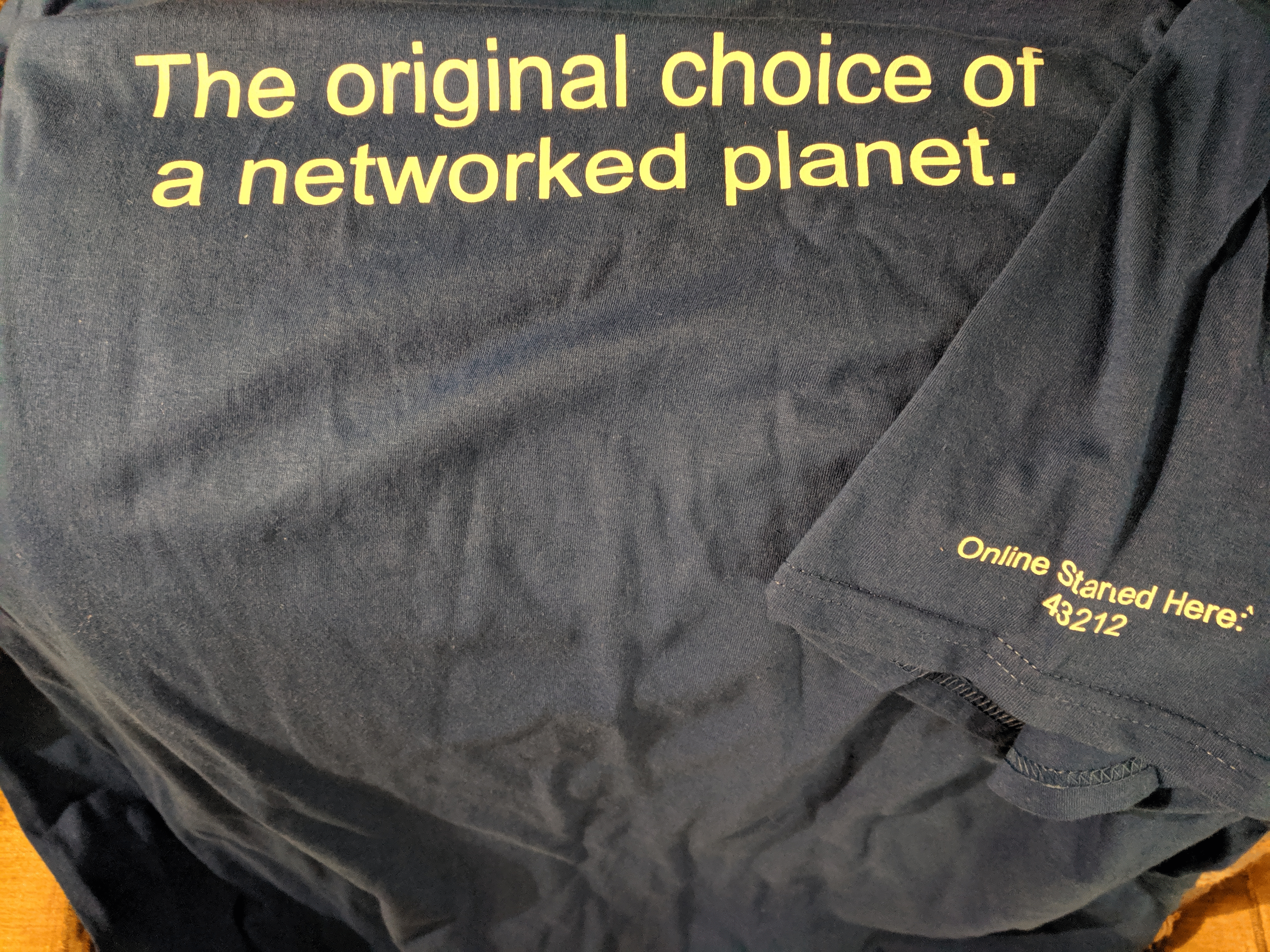Choosy Programmers Choose GIF
Steve Wilhite is the most prolific programmer I’ve ever known. He’s mostly remembered for creating GIF but he spent 30 years writing piles of amazing software which helped set the stage for the Web.

Figure 1: CompuServe XF4 Fortran Manual
Day 02 of #100DaysToOffload.
Steve worked at CompuServe (and successors) from 1970 to 2001. I was fortunate enough to start my career working with/for him. My view of his programming output comes largely from 1985-1995. I’m sure there was much more that I missed.
Things Steve Wrote
Steve ran the languages and tools group when I arrived. He had just given up on writing at DEC10 ADA compiler1 (Steve is still writing ADA software), was just beginning to embrace PCs as “real computers” worthy of his attention, had written a FORTRAN compiler, a BASIC compiler and associated run-time systems, and a run-time library for BLISS called BTOOLS. These were partially in support of CompuServe’s pre-information-service time-sharing services supported by a homegrown packet-switched networking. “Cloud computing” in the 1970s :-)
I worked on BTOOLS, SKIMAN (Single Key Index Access Manager), a B-Tree library Steve had created. There was a full-fledged database system written in there somewhere I think. There were ports and hacks to various tools such as FINE (Fine Is Not Emacs), a C compiler, DEC Runoff, laser printer support, source code control systems, etc.
On top of that, Steve created the HMI (Host Micro Interface) protocol that rode on top of CompuServe “B-Protocol” to allow API driven interactions with the information service (the alternative being text/command line interfaces). This was all in an environment where 9600baud modems were considered “fast”. Compression, incremental display, etc. were paramount.
He later used that as the substrate for WinCim, the graphical interface to the information service that he created which kept the company going for a while in the face of the likes of AOL. Somewhere in there, there was a graphics library and enough pieces that I was able to write a web browser that worked inside WinCim, that would have allowed CompuServe users without an Internet connection (most everyone then) to browse the web. Marketing did not want to release my web browser. Sigh.
Later on (after my time) Steve as pulled into major projects to support the back end processing for H&R Blocks’s TaxCut program when online tax-filing was a new thing. He was also pulled into the WOW project which was supposed to be the AOL killer when it became apparent that CompuServe needed an AOL killer.2 One of those projects succeeded. Single-handed technical virtuosity could not fix the one that didn’t.
And there was this little side project called GIF.
Things that got out
GIF
Be careful what you do and say. It’s often the incidentals that you are remembered for. The kind (or unkind) words. The side projects.
In the world of the mid 80s there were IBM PCs, Apple Macs (classic), Amigas, Atari-STs, CoCos, and yes, Apple-IIs and Commodor-68s. The information service was moving beyond a text-based, menu-driven system (I like curses and termcap as much as the next guy, but hey..). People wanted to share pictures, display online-shopping catalogs, weather maps, etc. There were no/few good portable graphics formats. So Steve wrote one. GIF. Then the web happened. The web wanted portable images too. GIF worked. So the early web adopted it. There was the kerfuffle over the LZW compression algorithm it used resulting in the creation of the PNG format, but, hey, who in 1987 would ever think that an algorithm published in ACM might not be free. OK, Stallman, but who else :-). And now there are Giffy’s in slack that I turn off because I hate dancing bears. Thank-you Steve.
MicroEmacs/mg display hacks
And then there are the MiroEmacs display hacks. When the Amiga came out Steve convinced me to buy one (it was that or the AtariST, he had and was hacking on both). But there was no Emacs. Somehow (Steve?) I became aware that the source to MicroEmacs was included on with the disks to Mark Williams C compiler for the PC. So I bought the C compiler, ported the source to the Amiga (all it needed was character I/O drivers to work in the native ANSI/VT-100 terminal) and gave the source to Steve, who, I think, hacked/improved the screen update logic. I then posted the source to the USENET group comp.sources.amiga. It took off from there (thanks to Daniel Lawerence). It’s rumored that Linus Torvalds uses a version of the code to this day.
CompuServe: Groundbreaking events, great teams and amazing individuals.
At the recent (2019-10-19) CompuServe 50th Anniversary reunion I was reminded of the revolutionary things that happened there: the first commercial email, the first online banking, the first online shopping, the first electronic news wire feed, the first song released exclusively online (Arrowsmith 1994), online chat (CB), OS and compiler development, VPNs (X.25 !), data over cable in 82….and Dan Piskur inventing what we know today as much of standard online security, incident response and “cyber”/law enforcement collaboration, all before the Internet.
Of course it all took the efforts of many people and groups: the network software team (packet switching c.a. 1972, take that DARPA), the “monitor group” (TOPS-10 OS development), MicroComputer Software (terminal emulators forever !), large systems software (billing et. al.), and of course the genius of the founders (John Goltz) and the vision of Jeff Wilkins (CEO 1970-1985).
There’s a lot to be said for being in the right place at the right time, and for having a team, but many things do not happen without the essential contributions of amazing individuals.
Thanks Steve.

Figure 2: It all started…